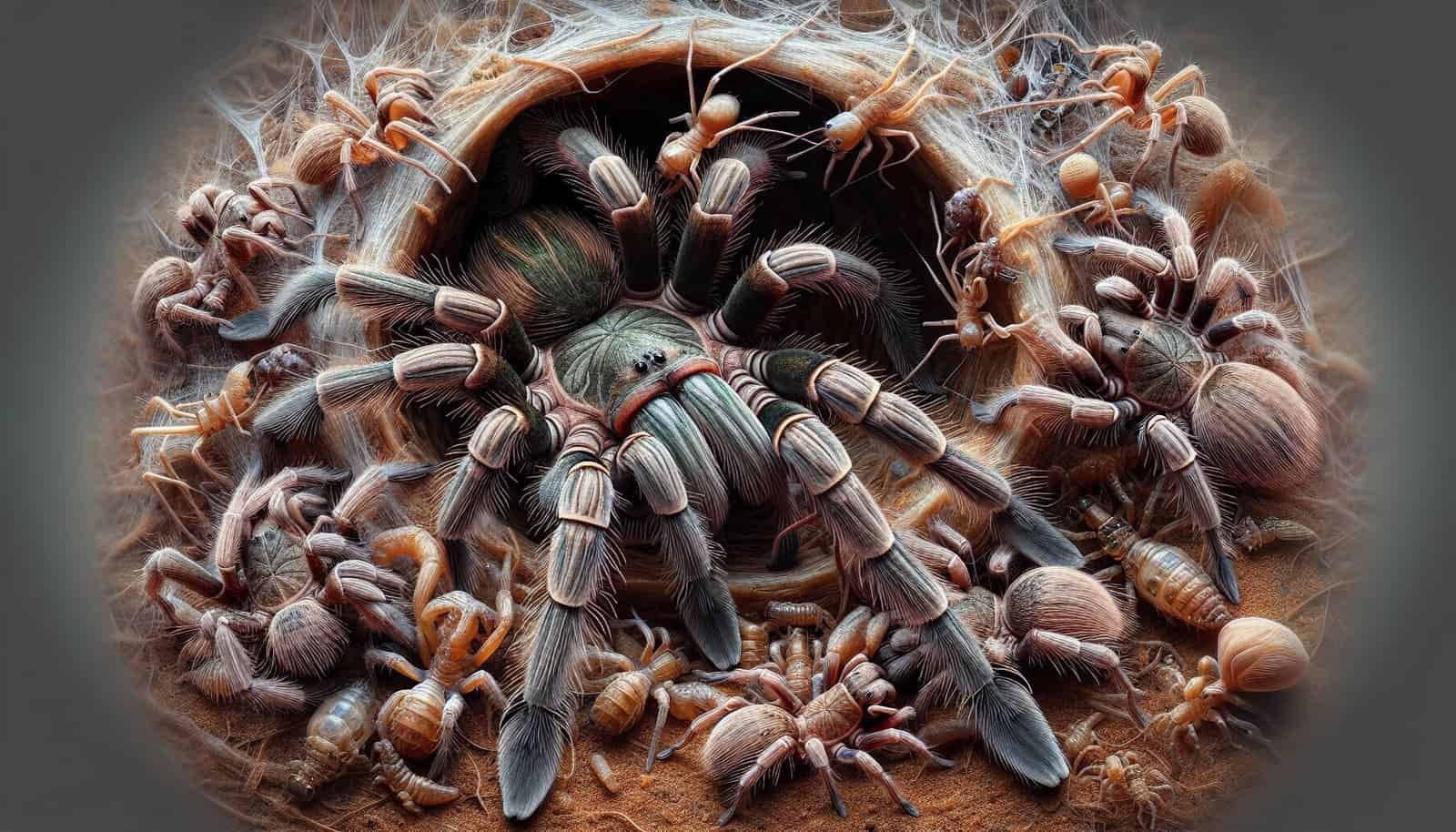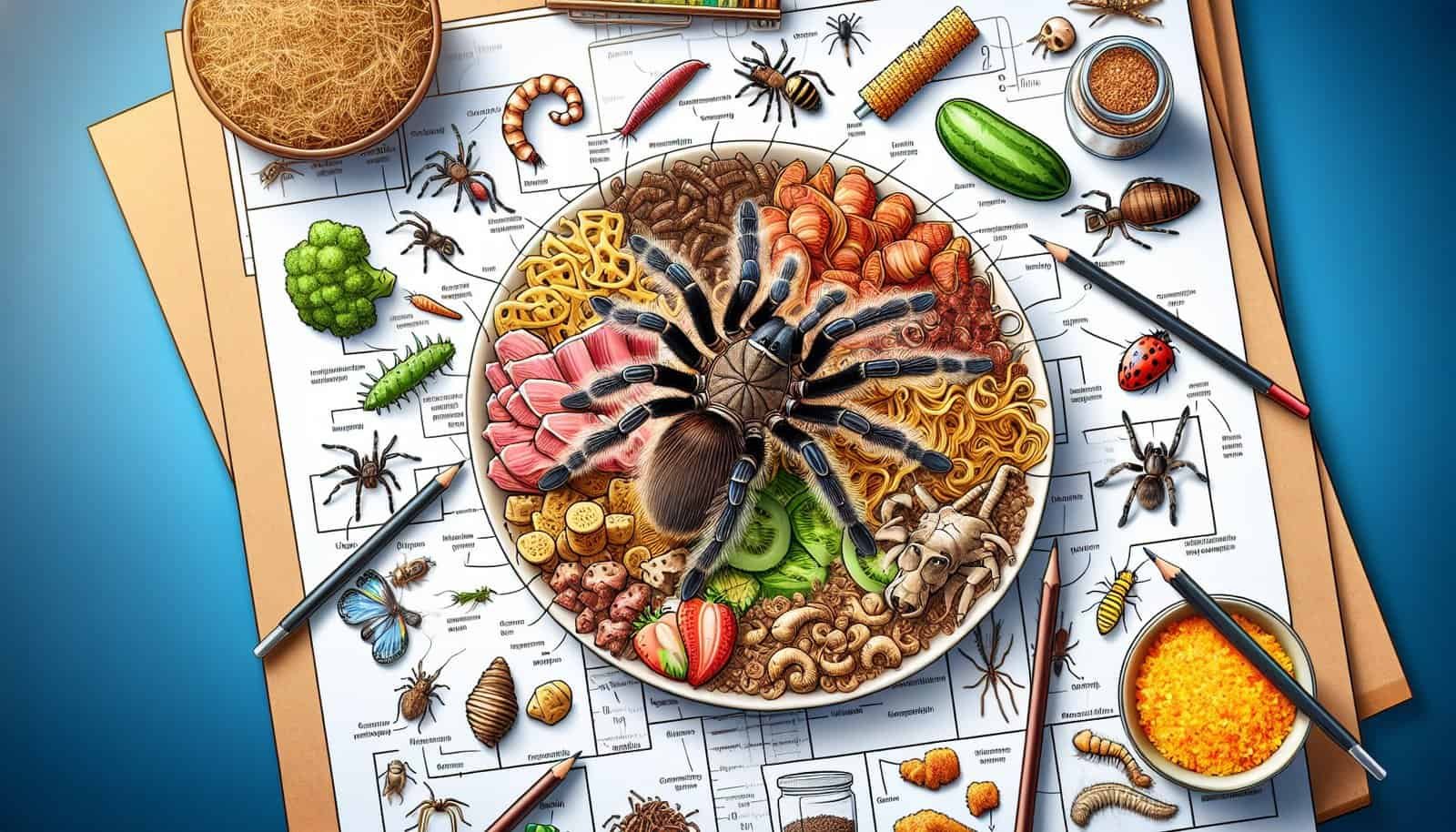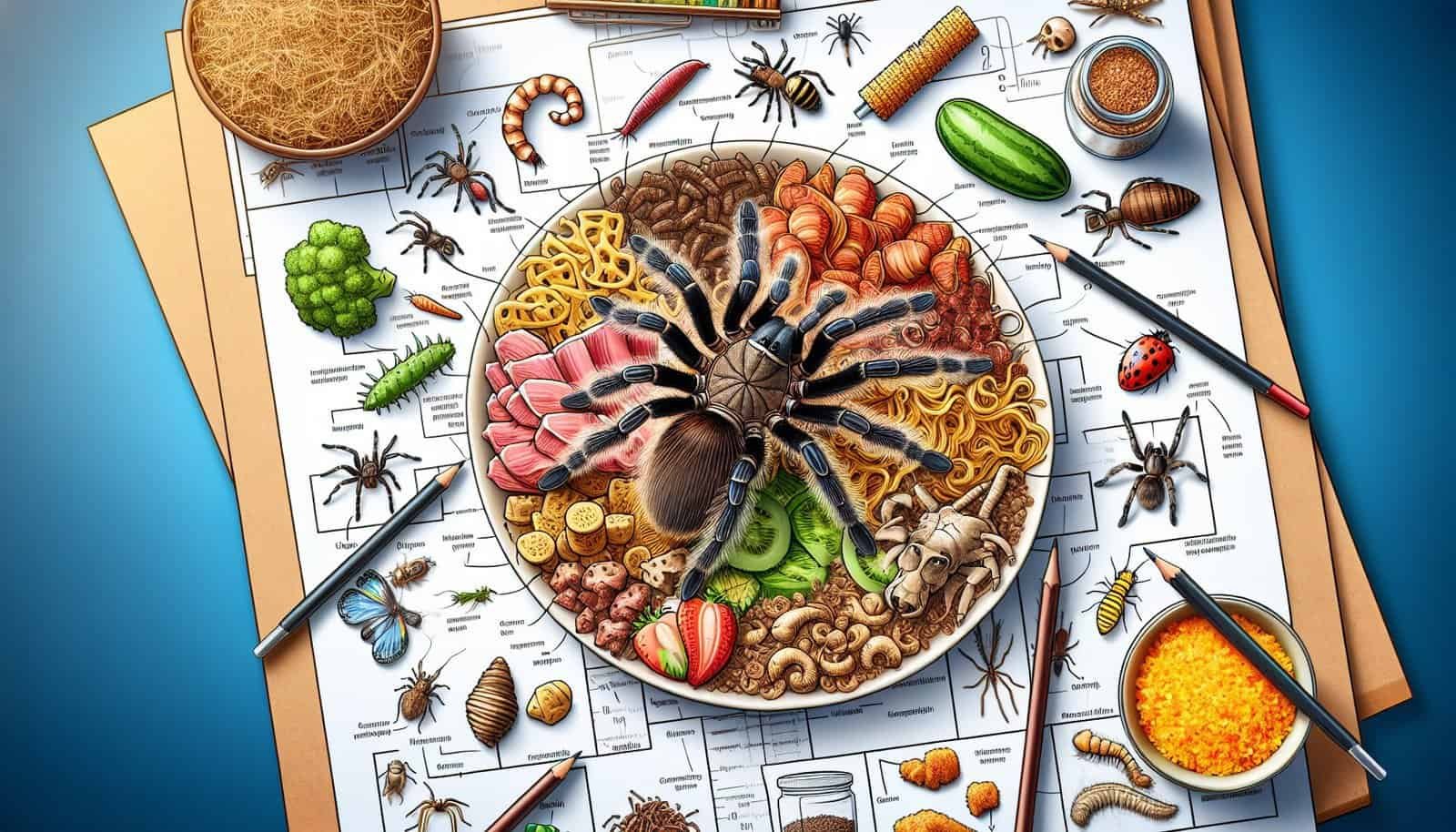So you’ve just become the proud owner of a tarantula spiderling and now you’re wondering what to feed it and how often? Don’t worry, we’ve got you covered! In this article, we’ll explore the best diet for tarantula spiderlings, providing you with all the information you need to keep your eight-legged friend happy and healthy. From discussing their dietary needs to offering some practical feeding tips, you’ll soon be confident in giving your little arachnid the sustenance it requires to thrive.

Feeding Tarantula Spiderlings
Feeding tarantula spiderlings can be an exciting and rewarding experience. These delicate creatures require a carefully balanced diet to ensure their growth and overall health. In this article, we will discuss the types of food suitable for tarantula spiderlings, the pros and cons of live prey versus pre-killed prey, commercially available prey options, gut-loading techniques, the importance of supplementing with calcium, how to avoid toxic or harmful food, determining feeding frequency, observing feeding responses, adjusting feeding schedules for growth, and the risks associated with overfeeding and obesity.
Types of Food for Tarantula Spiderlings
When it comes to feeding tarantula spiderlings, insects serve as the staple diet. They offer the necessary nutrients and protein needed for growth and development. It is crucial to provide a variety of insects to ensure a balanced diet and prevent nutritional deficiencies. Some suitable insects for spiderlings include small crickets, fruit flies, pinhead crickets, and small roaches.
It’s important to avoid venomous insects as they can pose a significant risk to the health of your tarantula spiderlings. Make sure to research and identify any potential dangers before introducing new insects into their diet. Additionally, alternative protein sources such as mealworms and waxworms can be considered, but they should be offered sparingly and in moderation.
Live Prey vs. Pre-Killed Prey
When deciding between live prey and pre-killed prey, there are several factors to consider. Live prey can offer a more natural hunting experience for tarantula spiderlings and stimulate their instinctual behaviors. However, there are safety concerns associated with live prey, as they can injure or harm the spiderlings during the feeding process.
On the other hand, pre-killed prey provides a safer feeding option. It eliminates the risk of injury to the spiderlings and increases the overall digestibility of the prey. Pre-killed prey also allows for better control over portion sizes and reduces the chances of overfeeding.
To prepare pre-killed prey, you can freeze and thaw the insects before offering them to the spiderlings. This will mimic the natural process of capturing and preserving prey. When presenting pre-killed prey, make sure to dangle it in front of the spiderlings using tweezers or forceps to simulate live movement and encourage hunting behaviors.
Commercially Available Prey
If you prefer not to breed or gather your own prey, there are commercially available options specifically designed for tarantula spiderlings. These commonly include small crickets, fruit flies, and other appropriate-sized insects. Opting for commercially available prey ensures quality control and eliminates potential concerns about hygiene or parasites.
When choosing commercially available prey, ensure that the prey items are suitable for spiderlings and their specific size. It’s always best to consult with a reputable pet store or breeder to determine the most appropriate options for your tarantula spiderlings.

Gut-Loading Prey
Gut-loading is a technique that involves feeding your chosen prey nutritious foods before offering them to your tarantula spiderlings. This process enhances the nutritional value of the prey by increasing the nutrient content they consume.
Gut-loading offers several benefits, such as providing additional vitamins and minerals to the spiderlings. It also contributes to the overall health and well-being of the tarantulas. To gut-load prey, feed them nutrient-rich foods such as fresh fruits, vegetables, or specially formulated gut-loading diets. This ensures that the spiderlings receive a more diverse and nutritious diet.
Supplementing with Calcium
Calcium is an essential mineral for the overall health and development of tarantula spiderlings. It plays a crucial role in the formation of their exoskeleton and promotes proper growth. Calcium deficiency can lead to various health issues and should be addressed to ensure the well-being of your spiderlings.
Some common symptoms of calcium deficiency in tarantula spiderlings include a soft exoskeleton and difficulties in molting. To prevent and address calcium deficiencies, it is important to supplement their diet with calcium. This can be done through commercially available calcium supplements specifically designed for tarantulas. It’s important to use safe calcium sources approved for tarantulas to avoid any potential toxicity or harm.

Avoiding Toxic or Harmful Food
Tarantula spiderlings, like all creatures, should not be fed toxic or harmful food. It’s crucial to identify the potential risks associated with certain insects and avoid feeding these to your spiderlings. Some commonly toxic insects for tarantulas include fireflies, beetles, and certain species of ants.
Feeding toxic or harmful food to tarantula spiderlings can result in severe health issues and even death. Always opt for alternative food options that are safe and offer similar nutritional value. Reputable pet stores and breeders can provide guidance on suitable prey items and alternative food choices.
Feeding Frequency
The feeding frequency for tarantula spiderlings varies depending on their species and growth stage. It’s important to establish a varied feeding schedule that meets their specific needs. Some spiderlings may require to be fed more frequently, while others may have less demanding appetites.
Observing the spiderlings’ growth and behavior can help determine their hunger levels and feeding requirements. It’s essential to strike a balance between providing enough food for growth without overfeeding the spiderlings. Overfeeding can lead to potential health problems and even obesity, which can be detrimental to their overall well-being.

Observing Feeding Response
When offering food to tarantula spiderlings, it’s important to observe their feeding response. This can help determine their hunger levels and ensure they are consuming an adequate amount of food. A healthy feeding response includes the spiderlings actively hunting and capturing their prey, showing enthusiasm and agility.
Monitoring the spiderlings’ food consumption is also crucial. If they consistently leave uneaten prey, it may be a sign of satiation, and the feeding schedule may need adjustment. Conversely, if they consistently consume all the offered prey and display a voracious appetite, it may indicate that their feeding schedule should be increased to support their growth.
Adjusting Feeding Schedule for Growth
As tarantula spiderlings grow, their feeding requirements change. It’s important to monitor their growth and adjust their feeding schedule accordingly to ensure they receive the appropriate amount of food. Spiderlings that are rapidly growing may require more frequent feedings, while those in slower growth stages may need less frequent feedings.
Regularly assessing the spiderlings’ size and behavior can help determine the necessary adjustments in their feeding schedule. Consulting with experienced tarantula keepers or breeders can provide valuable insights into handling the specific growth needs of your spiderlings.

Overfeeding and Obesity Issues
Overfeeding tarantula spiderlings can lead to several health risks and complications. It’s essential to avoid overfeeding and balance the amount of food they receive. Overfed spiderlings can become obese, leading to issues such as reduced mobility, difficulty in molting, and potential organ damage.
Ensuring a balanced and appropriate feeding amount is crucial for maintaining the long-term health and well-being of tarantula spiderlings. Monitoring their growth, behavior, and adjusting their feeding schedule accordingly can help prevent overfeeding and obesity-related problems.
In conclusion, feeding tarantula spiderlings requires careful consideration of their diet, feeding schedule, and overall health. Providing a variety of insects, whether live or pre-killed, along with gut-loading and supplementing with calcium, ensures the nutritional needs of the spiderlings are met. Avoiding toxic or harmful food, closely monitoring their feeding responses, and adjusting feeding schedules for growth are all essential factors in fostering a healthy and thriving tarantula spiderling. By following these guidelines, you can provide the best possible care for your tarantula spiderlings and promote their overall well-being.
